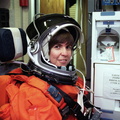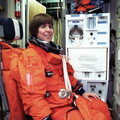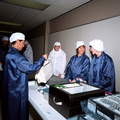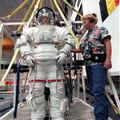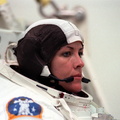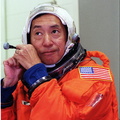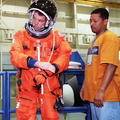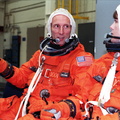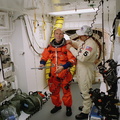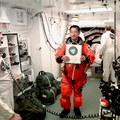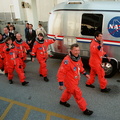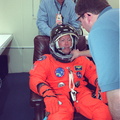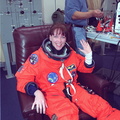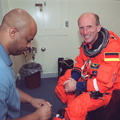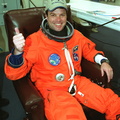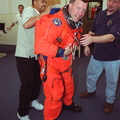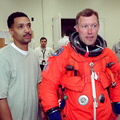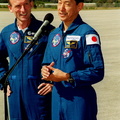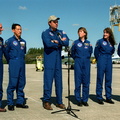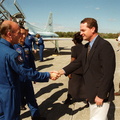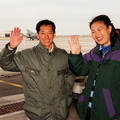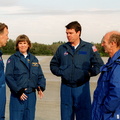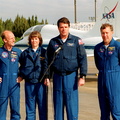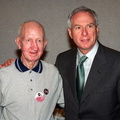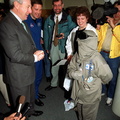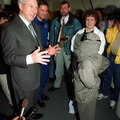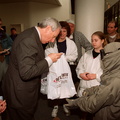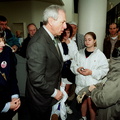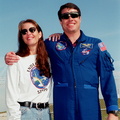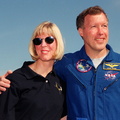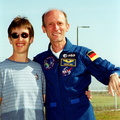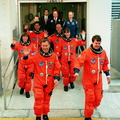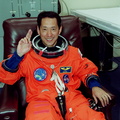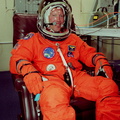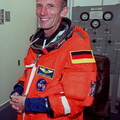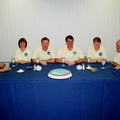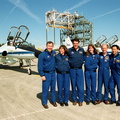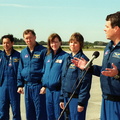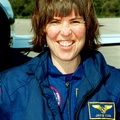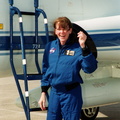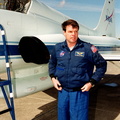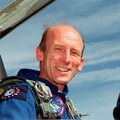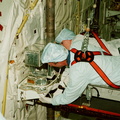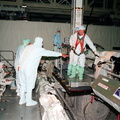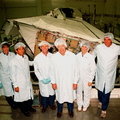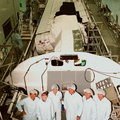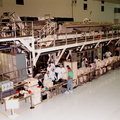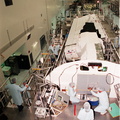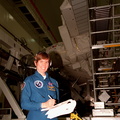
WIKIARCHIVES.SPACE
The Human Spaceflight Archive

Information
- Taken in
- Kennedy Space Center
- Forfatter
- NASA
- Beskrivelse
- In the Orbiter Processing Facility, STS-99 Mission Specialists Mamoru Mohri (left center), who is with the National Space Development Agency (NASDA) of Japan, and Janice Voss (Ph.D.) look over equipment during a Crew Equipment Interface Test (CEIT). The CEIT provides an opportunity for crew members to check equipment and facilities that will be aboard the orbiter during their mission. Others taking part are Commander Kevin R. Kregel, Pilot Dominic L. Pudwill Gorie, and Mission Specialists Janet Lynn Kavandi (Ph.D.) and Gerhard P.J. Thiele, who is with the European Space Agency. The SRTM is a specially modified radar system that will gather data for the most accurate and complete topographic map of the Earth's surface that has ever been assembled. SRTM will make use of radar interferometry, wherein two radar images are taken from slightly different locations. Differences between these images allow for the calculation of surface elevation, or change. The SRTM hardware will consist of one radar antenna in the shuttle payload bay and a second radar antenna attached to the end of a mast extended 60 meters (195 feet) out from the shuttle. STS-99 is scheduled to launch Sept. 16 at 8:47 a.m. from Launch Pad 39A.
- Oprettet den
- Onsdag 28 Juli 1999
- Albummer
-
Locations / OSM-4.915832801313164
US SPACE PROGRAM / SPACE SHUTTLE / MISSIONS / STS-99 / Training and Pre-Flight
- Source link
- https://science.ksc.nasa.gov/gallery/photos/1999/
- Besøg
- 39
- Bedømmelse
- ingen bedømmelse
- Bedøm dette fotografi
- License
- CC BY-NC-ND
- Modified by WikiArchives
- No (original)
- Downloads
- 1
Drives af Piwigo



